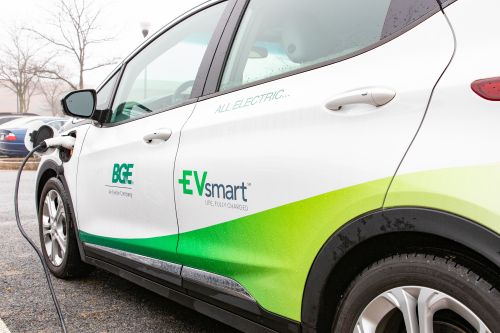Bring-Your-Own-Batteries and EV Chargers: The Future of Distributed Energy Integration?
Bring-Your-Own-Batteries and EV Chargers: The Future of Distributed Energy Integration?

Distributed energy resources including rooftop solar, smart thermostats, behind-the-meter batteries, smart inverters and electric vehicle chargers have value for the customers installing them — and for the utilities seeing them proliferate across their distribution grids.
But how can utilities and customers agree on sharing these potential values? In its latest research, Wood Mackenzie Power & Renewables highlights how answering these questions is a key part of capturing the full value of behind-the-meter assets as they grow to gigawatt scale on U.S. power grids.
“Bring-your-own-device” (BYOD) programs are one way to bridge this divide between customer and utility. Utilities like the BYOD concept because it avoids more expensive approaches, like rate-basing the costs of paying customers to install distributed energy resources. And customers seem to like them — at least when the programs combine lucrative-enough incentives with a utility approach that doesn’t infringe on controlling their own home energy as they see fit.
Brooklyn, New York-based EnergyHub has focused on the BYOD approach for years now, from its early days as a software provider for smart thermostats and home energy controllers to its more recent work on integrating solar inverters, batteries, EV chargers and grid-responsive water heaters.
Some of its 40+ utility partners are pushing the BYOD concept into new areas. In the past six months, the Alarm.com subsidiary has made significant strides in two classes of DERs — behind-the-meter batteries and grid-responsive EV chargers — that could serve as models for reducing DER integration costs and complexities for the rest of the industry.
Bring-your-own battery (and smart inverter) program with National Grid
Since early 2018, EnergyHub has been working with utility National Grid to allow customers to enroll their own solar-charged battery systems in the utility’s “ConnectedSolutions” program in Massachusetts and Rhode Island. National Grid pays customers to allow it to tap the batteries’ stored energy during peak summer afternoons for demand response events and pays them for the performance they provide.
After a slow start in 2018, the bring-your-own-battery program picked up steam last year, with customers responding to an average of 40 events through the season, Paul Wassink, National Grid’s demand response program manager, said in a May webinar. In exchange, they are paid $400 per kilowatt-hour of discharge as averaged over the course of the year, with annual payments of up to $2,000 for customers able to deliver up to 5 kilowatts per hour per event.
National Grid boosted those incentives from its first year to entice more customers, he said. But the program has proven successful and cost-effective enough to earn permanent status from Rhode Island regulators, while Massachusetts regulators are weighing making it permanent after its pilot program status expires next year, he said.
Getting battery vendors to agree to allow the utility to tap systems meant for customer emergency backup and energy savings was an early challenge, said Chris Ashley, EnergyHub vice president of utility sales. In the first year, only Sunrun participated. Setting limits on discharging for demand-response events gave vendors more confidence to sign up, with Tesla, sonnen and most recently Vivint Solar joining as participants.
Since inverters control battery output, EnergyHub also built partnerships with inverter makers including SolarEdge, Outback and Generac’s Pika Energy to allow a wider range of batteries to be involved, he noted. Smart inverters are a key control point for batteries and solar, and EnergyHub is working with others, including SMA, on a long-running pilot project with utility Arizona Public Service to enlist inverters for grid services.
National Grid is still seeking regulator approval to use these customer-owned batteries and inverters to help manage local grid problems or serve as non-wires alternatives to distribution grid investments, Wassink said. But it has gotten approval to allow the batteries to export power to the grid, rather than simply zero out home energy usage, which boosts their value as demand-response assets.
Self-metering, bring-your-own EV chargers with Baltimore Gas & Electric
Back in March, EnergyHub and utility Baltimore Gas & Electric (BGE) launched a big BYOD effort, aimed at tapping customers’ smart thermostats for demand response and offering a $300 rebate for customers to install EV chargers linked to a time-of-use rate to encourage them to charge overnight, rather than during peak afternoon and evening hours.
Most utilities are trying to get EV owners to avoid peak-time charging via price programs or incentives. But BGE’s may be the first in the country to allow the metering of that energy through the EV charger itself, rather than a separate utility-owned meter — a difference that can reduce the cost of implementation by hundreds or even thousands of dollars.
BGE received a waiver from the Maryland Public Service Commission to use this method in order “to limit the need for system investments that would impact the rates that BGE would charge customers,” Kristy Fleischmann Groncki, BGE strategic programs manager, said in a March interview. “Installing a second meter is very costly.”
Cutting costs for metering EV charging usage can play a huge role in whether or not customers sign up for programs like these. A 2017 study by Nexant for the California Public Utilities Commission found that increasing submetering costs to $150 could reduce enrollment likelihood by about a third, and increasing it to $300 could reduce the likelihood of enrolling in a submetering program by half, compared to a zero-cost option.
Rather than using that approach, “we have a brand-new model of using the smart charger data as revenue-grade” metering data that can be subjected to careful auditing, Fleischmann Groncki said. The same EnergyHub system that manages that metering can also “communicate with that charger, similar to the [approach we use] with thermostats today,” she said. “If there’s a problem on the system, we can turn off those chargers or ask them to change [the time at which] they charge.”
“Our value is giving our clients this one single platform to operationalize all these different classes of DERs in concert with the grid,” said Aakriti Gupta, EnergyHub product marketing manager. “EVs…are a class of DERs we’re super-excited about.”









